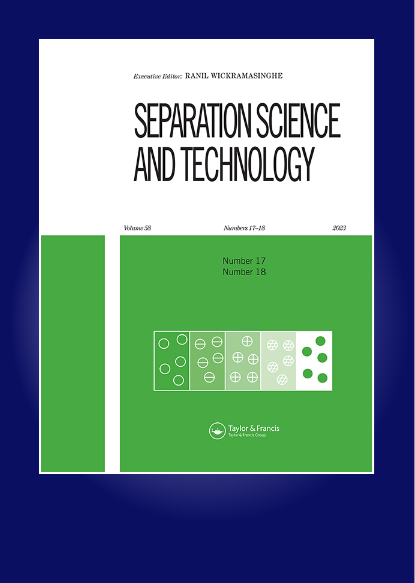曝气铁电絮凝法是一种新兴的天然水、废水处理方法
IF 2.3
4区 工程技术
Q3 CHEMISTRY, MULTIDISCIPLINARY
引用次数: 1
摘要
曝气铁电絮凝是一个新兴的水和废水处理领域。与常规电混凝工艺相比,曝气铁电混凝工艺具有更高的污染物去除效率,并能生成铁基离子等氧化剂,能有效氧化亚砷酸盐、有机物等污染物。此外,在曝气电凝过程(该过程也称为过氧电凝)中用作阴极(而不是铁)的碳基材料在改性电凝研究中具有显著的优势,因为它们无腐蚀性和惰性。在曝气铁电絮凝过程中,除铁基离子外,还能产生过氧化氢等氧化剂和羟基自由基。因此,在研究范围内评估了石墨和碳纳米管等碳基材料作为电极材料的用途。本文章由计算机程序翻译,如有差异,请以英文原文为准。
Aerated iron electrocoagulation process as an emerging treatment method for natural water and wastewater
ABSTRACT Aerated iron electrocoagulation is an emerging field of water and wastewater treatment. In comparison with the conventional electrocoagulation process, aerated iron electrocoagulation process has higher pollutant removal efficiency and has the ability to generate oxidants like ferryl ions, which are able to oxidize the pollutants such as arsenite and organic compounds effectively. In addition, carbon-based materials used as cathodes (instead of iron) in aerated electrocoagulation process (the process is also known as peroxi-coagulation) offer significant advantages in modified electrocoagulation studies, since they are non-corrosive and inert. Peroxi-coagulation is able to generate oxidants such as hydrogen peroxide, and hydroxyl radicals, in addition to ferryl ions in aerated iron electrocoagulation process. For this reason, the uses of carbon-based materials such as graphite, and carbon nanotubes, as electrode materials are evaluated within the scope of the study.
求助全文
通过发布文献求助,成功后即可免费获取论文全文。
去求助
来源期刊

Separation Science and Technology
工程技术-工程:化工
CiteScore
6.10
自引率
3.60%
发文量
131
审稿时长
5.7 months
期刊介绍:
This international journal deals with fundamental and applied aspects of separation processes related to a number of fields. A wide range of topics are covered in the journal including adsorption, membranes, extraction, distillation, absorption, centrifugation, crystallization, precipitation, reactive separations, hybrid processes, continuous separations, carbon capture, flocculation and magnetic separations. The journal focuses on state of the art preparative separations and theoretical contributions to the field of separation science. Applications include environmental, energy, water, and biotechnology. The journal does not publish analytical separation papers unless they contain new fundamental contributions to the field of separation science.
 求助内容:
求助内容: 应助结果提醒方式:
应助结果提醒方式:


